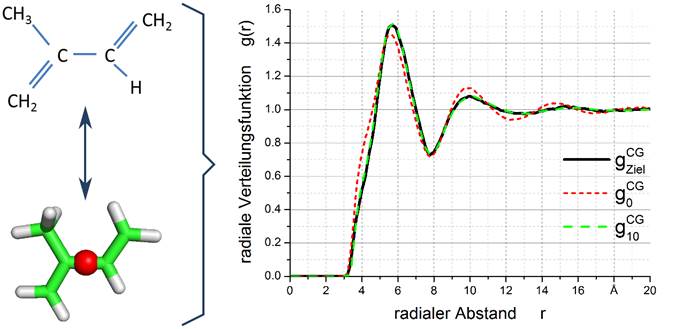TP 4: Simulation and Theory of Structure Formation
Project Manager: Prof. Dr. Karl Heinz HoffmannTU Chemnitz, Chair of Solid Surfaces Analysis, Chemnitz
Project Goals:
- Understanding Structure Formation - bridging the gap
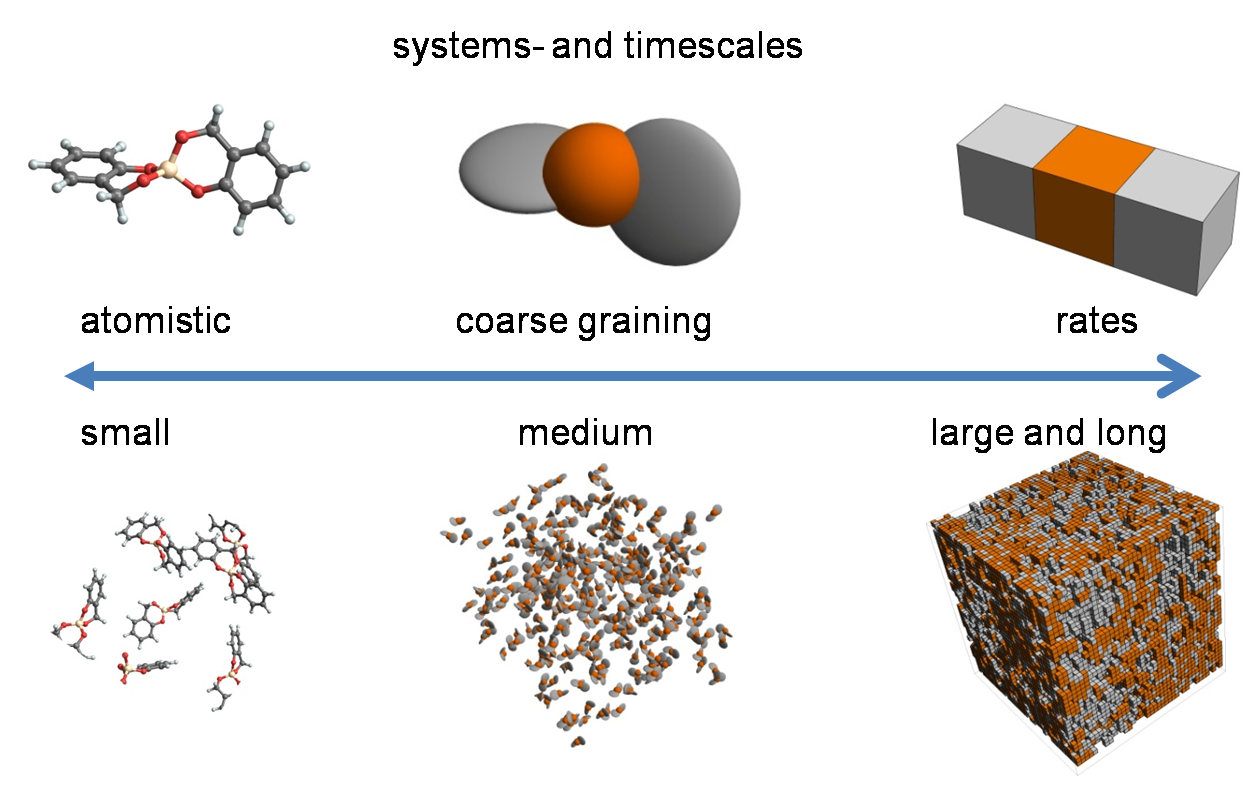
- Understanding the underlying processes of morphology and texture formation in context of (twin) nano composites
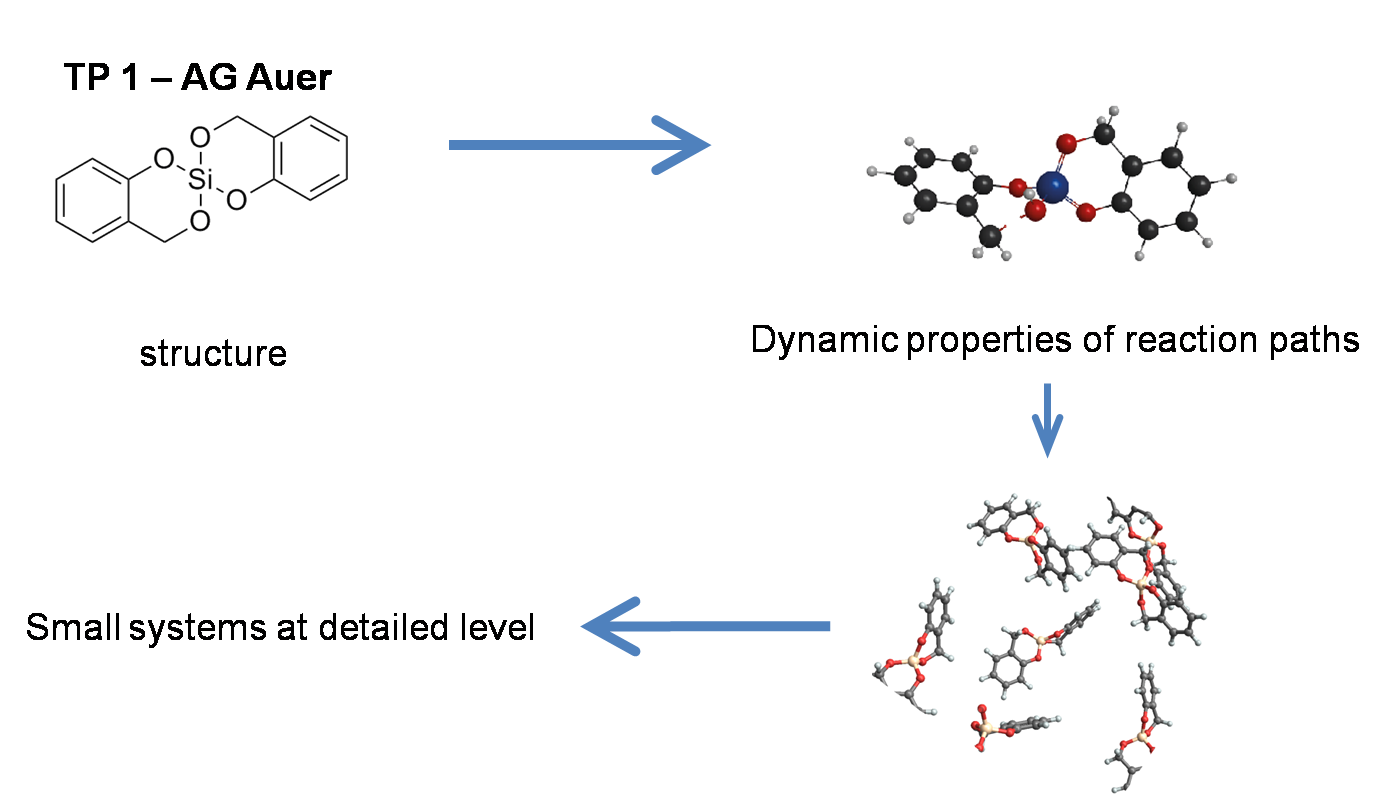
- Development of coarse grained interaction models
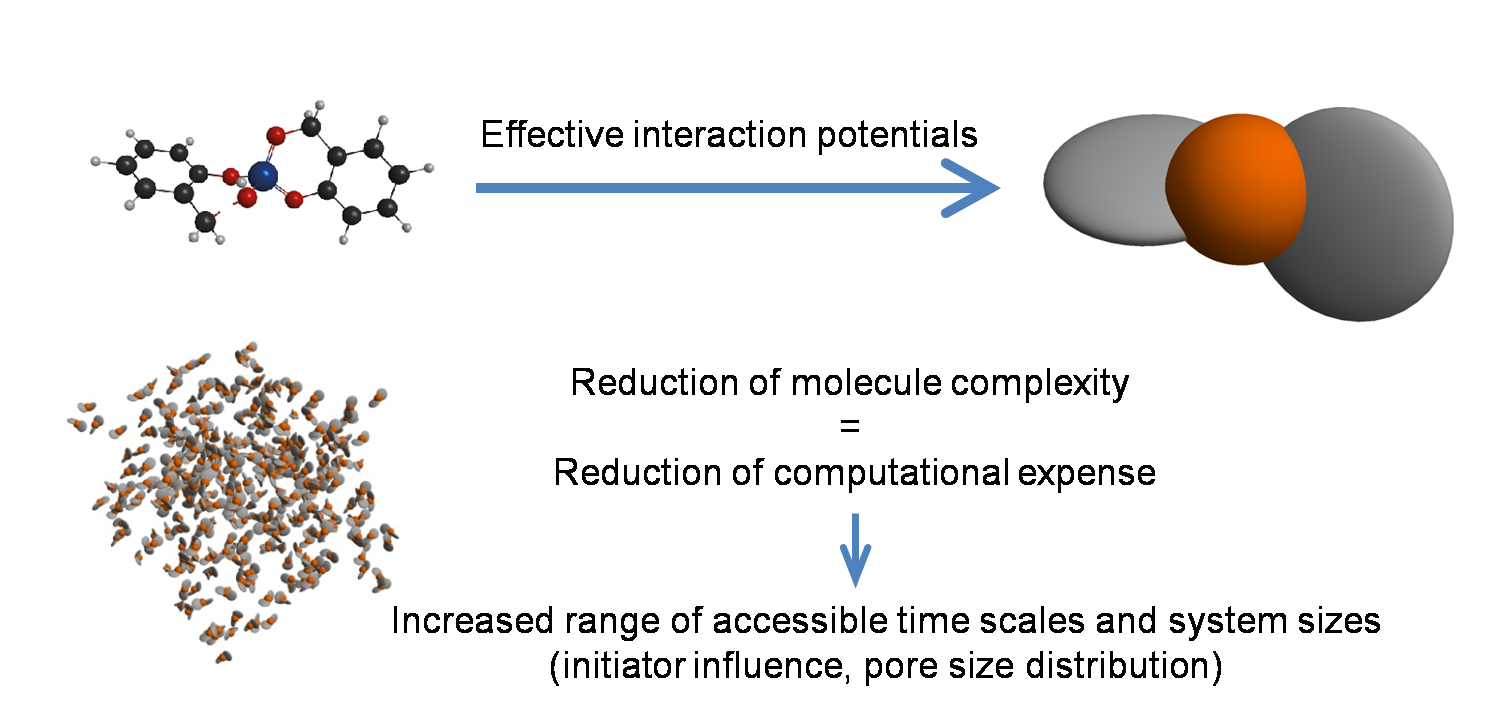
- Investigation of monomer composition and structure influences on resulting structuring of (twin) nano composites
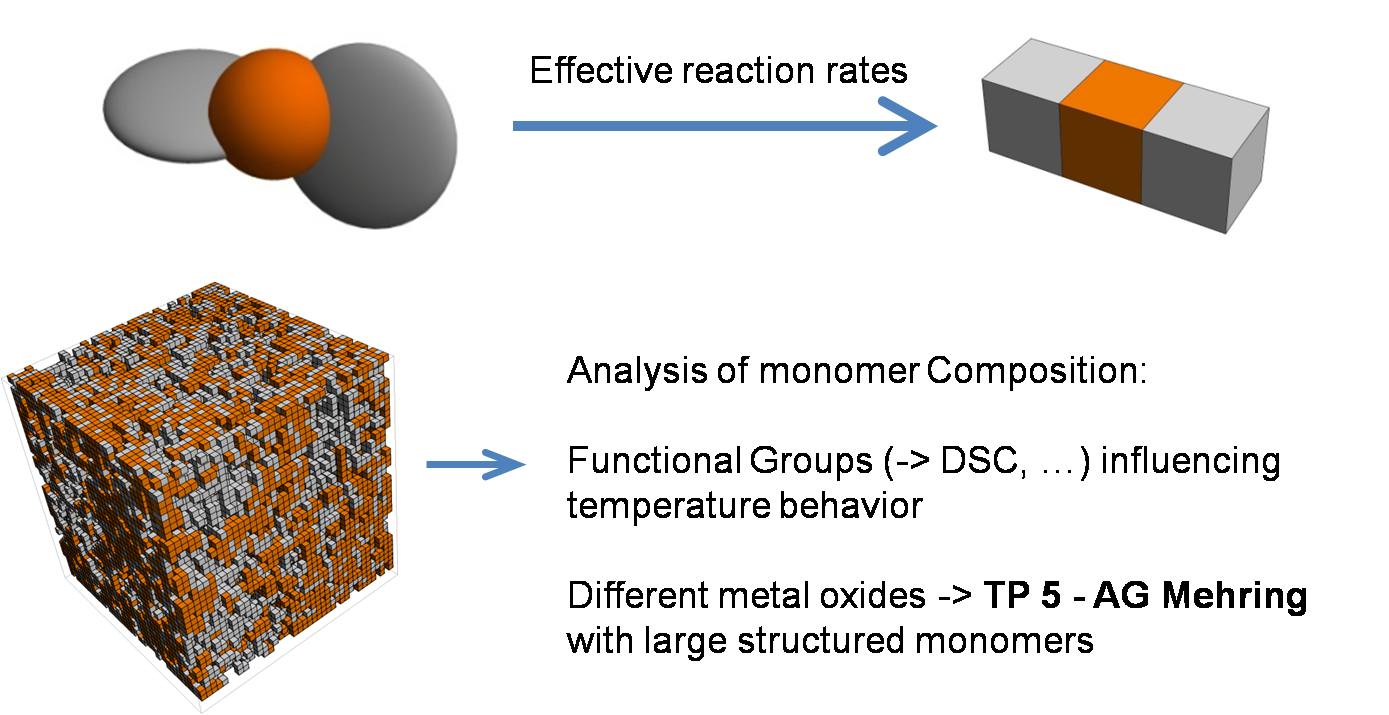
Atomic molecular dynamics with reactive force fields
- Adaption as well as parameterization and further development of the reactive interaction potential ReaxFF for molecular dynamics simulations. ReaxFF is a bond order potential, where the order of atomic bond is defined via the distance between a pair of atoms. The bond breaking and -formation is given by a bond order to bond length relationship.
- Adaption of known ReaxFF force field parameterizations for the Twin Monomer 2,2'-spirobi[4H-1,3,2-benzodioxasiline] (1) for the first time. (Color scheme: Si - yellow, O - red, C - gray, H - white)
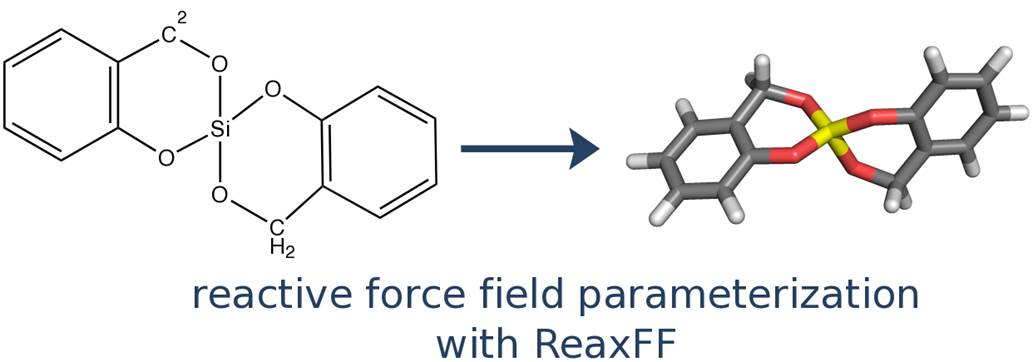
- Modeling of the reaction path of (1) predicted by quantum chemical calculations (SP1 and J.Friedrich) with in literature given ReaxFF parameterizations was not feasible due to the complexity of the Twin Polymerization process.
- Development of an own ReaxFF parameterization for modeling the Twin Polymerization.
- Development of a first ReaxFF parameterization to model the formation of the organic network under the assumption that only the proton of the acid has to considered as initiator of the reaction. With this TP-ReaxFF parameterization the simulation of the subsequent reaction steps (a) the ring opening and (b) the C-C bond formation of the organic components as predicted by quantum chemical calculations and as expected experimentally succeeded for the first time. (Color scheme: Si - yellow, O - red, C - gray, H - white)
- Due to the complexity of the Twin Polymerization reaction process it is necessary to extend the concept of ReaxFF and to introduce different atom types for characteristic chemical properties of the Twin Monomer. Within the framework of the sdar-ReaxFF parameterization we were able to simulate (a) the ring opening, (b) the C-C bond formation, (c) the SiO2 formation and (d) the phenolic group directly after each other for a small system. This is in accordance to quantum chemical calculations. However, again only the influence of the proton of the acid is considered within the reaction mechanism. (Color scheme: Si - yellow, O - red, C - gray, H - white)
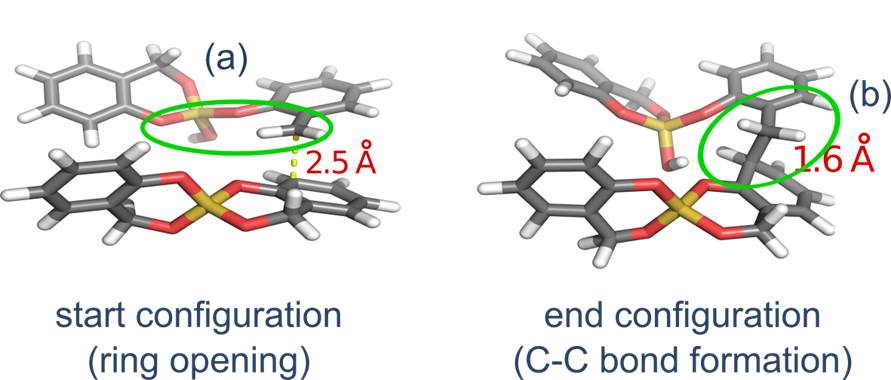
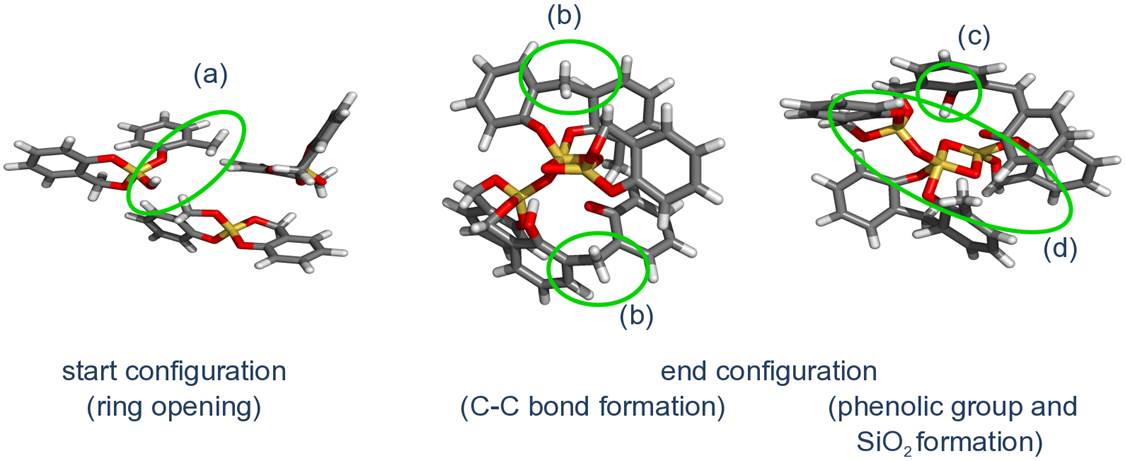
- It became apparent, that simulating the Twin Polymerization for larger system the full acid has to be taken into account and needed to be parameterized to include all interactions fully, as for instance the Coloumb interaction. In the beginning we concentrated on the Trifloroacetic acid (TFA). The necessary quantum chemical calculations to adapt the sdar-ReaxFF parameterization for TFA have been performed by the group of J.Friedrich and will be incorporated in the parameterization at the moment. A possible start configuration is shown in the figure below. (Color scheme: F - blue, Si - yellow, O - red, C - gray, H - white).
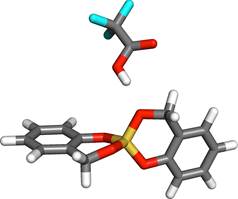
Coarse grained molecular dynamics with reactive force fields
- It became apparent, that simulating the Twin Polymerization for larger system the full acid has to be taken into account and needed to be parameterized to include all interactions fully, as for instance the Coloumb interaction. In the beginning we concentrated on the Trifloroacetic acid (TFA). The necessary quantum chemical calculations to adapt the sdar-ReaxFF parameterization for TFA have been performed by the group of J.Friedrich and will be incorporated in the parameterization at the moment. A possible start configuration is shown in the figure below. (Color scheme: F - blue, Si - yellow, O - red, C - gray, H - white).
